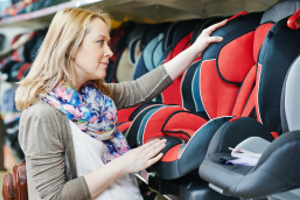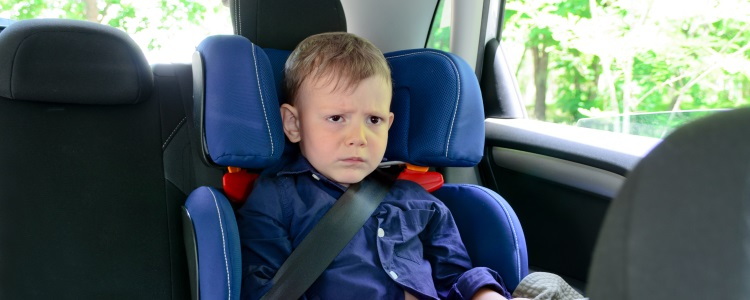September may have been Baby Safety Month, but keeping them safe is always a priority. Today's on-the-go society often means traveling with a baby, and these tips can help ensure he or she is safer every time you hit the road.
Proper Tire Care
Tires are responsible for keeping your car on the road by providing traction. They can only perform to their maximum potential if they're well cared for and in good condition. To ensure safety, Bridgestone recommends all drivers follow these tips:
- Inflate – Use a tire pressure gauge to check tires at least once a month and before long trips. The proper tire pressure for your vehicle is typically found on a sticker inside the driver’s door or in the owner’s manual.
- Rotate – Prevent irregular and premature tire wear by regularly rotating tires. Tires should be rotated and balanced to either the manufacturer’s recommendation or every 5,000 miles.
- Evaluate – Regularly look for tread wear and damage, as well as checking tread depth to ensure tires can grip the road.
It’s always a good idea to know the basics of tire maintenance. These include knowing how to locate the spare in your vehicle and how to change it. At the very least, have a service for roadside assistance, especially if you have a baby on board.
In a survey conducted by Harris Poll, Bridgestone found that only 59 percent of drivers know how to change a tire. This drops to just 36 percent among women drivers. They also found that 75 percent of women worry about losing control of their vehicle from a sudden flat tire.
Proper Car Seat Practices
 Perhaps the most important factor in keeping a baby safe is proper car seat practices. Knowing which car seat is best for your child, where to place it, and what position to use it all help keep a child safe.
Perhaps the most important factor in keeping a baby safe is proper car seat practices. Knowing which car seat is best for your child, where to place it, and what position to use it all help keep a child safe.
According to the National Highway Traffic Safety Administration (NHTSA), even as he or she grows, you should keep your child in a car seat as long as possible to maximize safety. The safest place is in the middle of the back seat. If you don’t have a back seat, such as in a truck, make sure to disable the passenger air bags.
In a survey from car seat manufacturer Chicco, 71 percent of parents don’t like giving, or receiving, unsolicited parenting advice, which makes sharing critical safety information difficult. This is why Chicco launched the TurnAfter2 initiative. It helps parents share educational safety information with their peers in a non-offending, non-judgmental way.
TurnAfter2 is a general reminder to stick to the American Academy of Pediatrics' recommendation to not turn a child forward-facing until at least the age of two. Parents are encouraged to share photos of their children in rear-facing car seats on social media using #TurnAfter2. This can be a non-confrontational way to make an example of themselves and serve as a reminder to other parents.
It’s not only parents and advocates that are sharing this important safety advice. This year, state legislators across the country have introduced bills that would mandate rear-facing child seats until the age of two by law.
“Laws establish a baseline that helps families better understand the safest ways to travel with their children in the car,” said Dr. Benjamin Hoffman, a nationally recognized expert in child passenger safety. “Good laws and effective education campaigns together can do even more to protect kids!”
Best Practices
Safety should always be a factor in choosing a vehicle. If you need a vehicle that’s safe for the whole family, but bad credit is standing in your way, Auto Credit Express wants to help. We work with a nationwide network of special finance dealers that have the lending resources available to help people with credit challenges. Take the first step by filling out our online auto loan request form today.


















